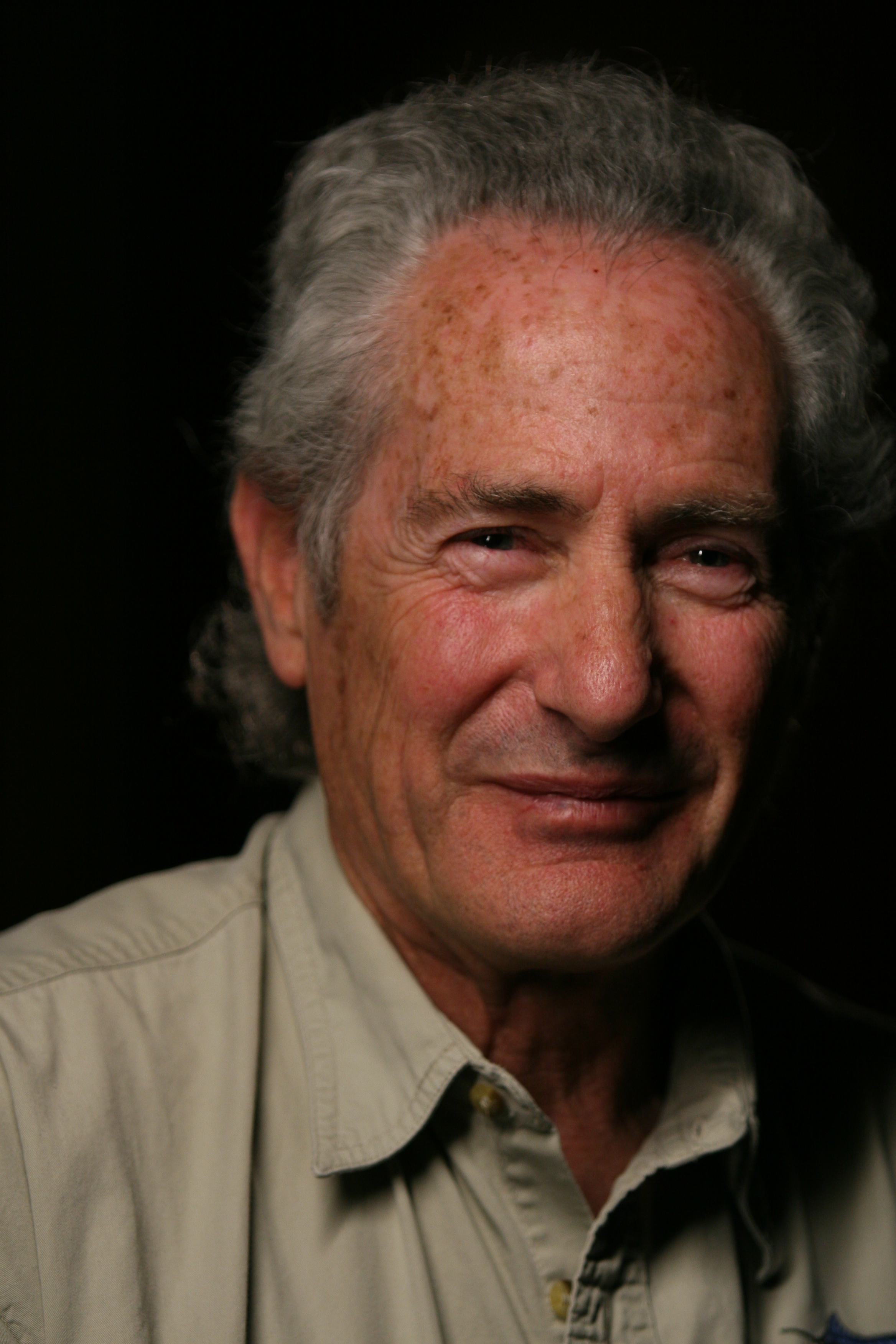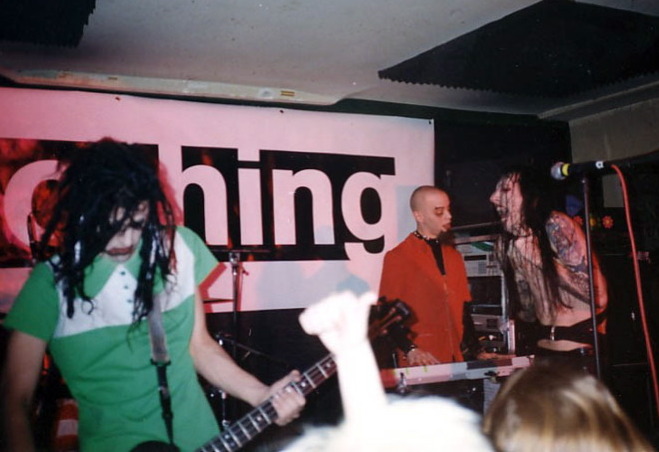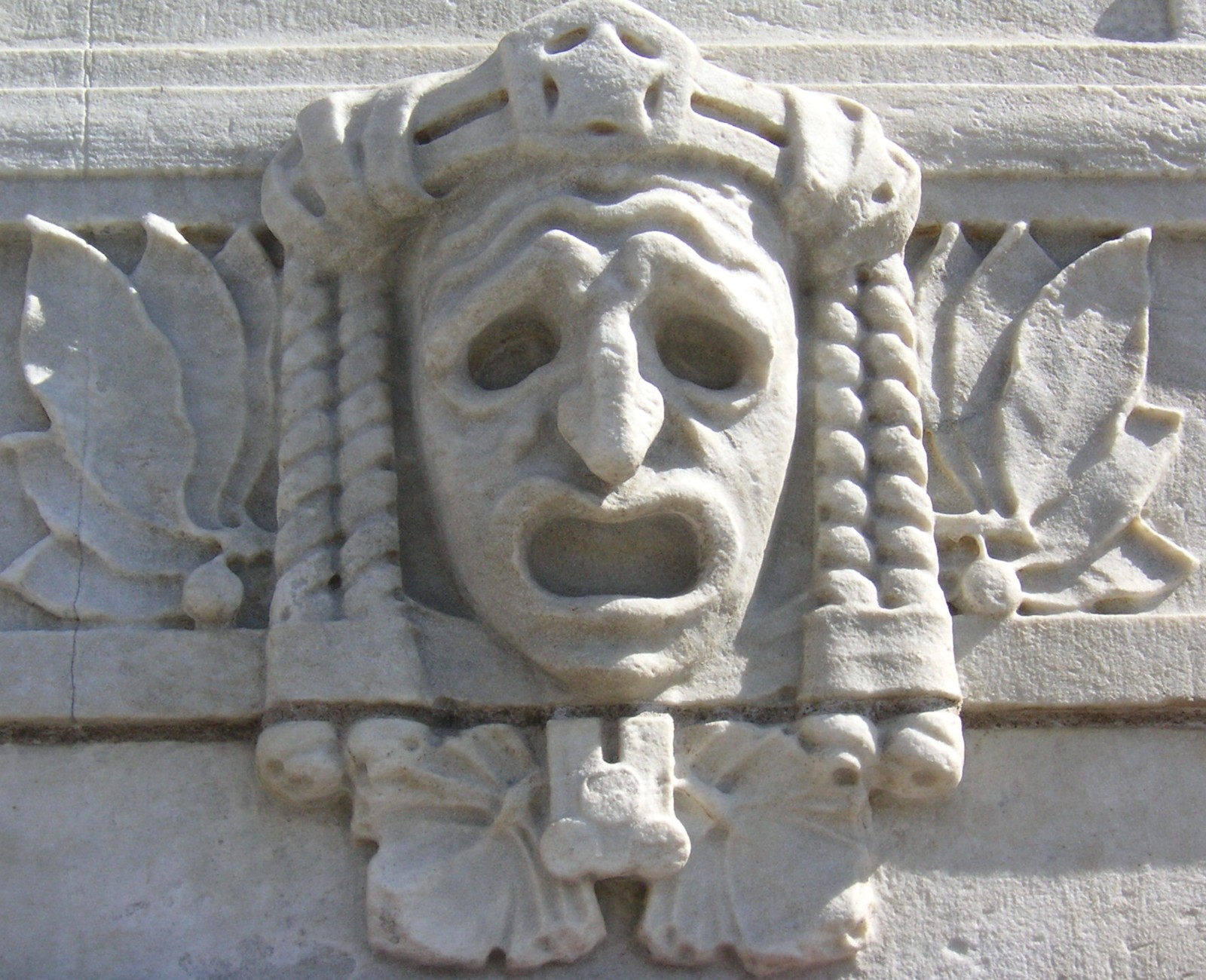|
Gave Up (song)
"Gave Up" is a song by American industrial rock band Nine Inch Nails. Written by frontman Trent Reznor and co-produced by Flood, the song serves as the sixth track of Nine Inch Nails' 1992 EP, '' Broken''. The song is noted for its multiple music videos and became a concert favorite during the band's live performances. Music and lyrics The song is noted for its aggressive tone, fast tempo and heavier use of guitars, in contrast to Reznor's dance-oriented previous songs from the album ''Pretty Hate Machine''. The song also features prominent use of Mellotron MKIV, which was previously owned by The Beatles' deceased frontman John Lennon. Robotic vocal effects are also present in the song. Lyrically, the song addresses the themes of isolation, belongingness, self-hatred and agony. Reznor's angst-filled lyrics in this song, such as "After everything I've done I hate myself for what I've become" was regarded as a solidification of his status as "the dark lord of doom." Music vid ... [...More Info...] [...Related Items...] OR: [Wikipedia] [Google] [Baidu] |
Nine Inch Nails
Nine Inch Nails, commonly abbreviated as NIN and stylized as NIИ, is an American industrial rock band formed in Cleveland in 1988. Singer, songwriter, multi-instrumentalist, and producer Trent Reznor was the only permanent member of the band until his frequent collaborator, Atticus Ross, joined in 2016. The band's debut album, ''Pretty Hate Machine'' (1989), was released via TVT Records. After disagreeing with TVT about how to promote the album, the band signed with Interscope Records and released the EP ''Broken'' (1992). The following albums, ''The Downward Spiral'' (1994) and ''The Fragile'' (1999), were released to critical acclaim and commercial success. Following a hiatus, Nine Inch Nails resumed touring in 2005 and released the album ''With Teeth'' (2005). Following the release of the album ''Year Zero'' (2007), the band left Interscope after a feud. Nine Inch Nails continued touring and independently released ''Ghosts I–IV'' (2008) and ''The Slip'' (2008) before a ... [...More Info...] [...Related Items...] OR: [Wikipedia] [Google] [Baidu] |
John Lennon
John Winston Ono Lennon (born John Winston Lennon; 9 October 19408 December 1980) was an English singer, songwriter, musician and peace activist who achieved worldwide fame as founder, co-songwriter, co-lead vocalist and rhythm guitarist of the Beatles. Lennon's work was characterised by the rebellious nature and acerbic wit of his music, writing and drawings, on film, and in interviews. His songwriting partnership with Paul McCartney remains the most successful in history. Born in Liverpool, Lennon became involved in the Skiffle#Revival in the United Kingdom, skiffle craze as a teenager. In 1956, he formed The Quarrymen, which evolved into the Beatles in 1960. Sometimes called "the smart Beatle", he was initially the group's de facto leader, a role gradually ceded to McCartney. Lennon soon expanded his work into other media by participating in numerous films, including ''How I Won the War'', and authoring ''In His Own Write'' and ''A Spaniard in the Works'', both collection ... [...More Info...] [...Related Items...] OR: [Wikipedia] [Google] [Baidu] |
Lost Highway (film)
''Lost Highway'' is a 1997 surrealist neo-noir horror film directed by David Lynch and co-written by Lynch and Barry Gifford. It stars Bill Pullman, Patricia Arquette, Balthazar Getty, and Robert Blake. The film follows a musician (Pullman) who begins receiving mysterious VHS tapes of him and his wife (Arquette) in their home. He is suddenly convicted of murder, after which he inexplicably disappears and is replaced by a young mechanic (Getty) leading a different life. ''Lost Highway'' was financed by the French production company Ciby 2000 and was largely shot in Los Angeles, where Lynch collaborated with frequent producer Mary Sweeney and cinematographer Peter Deming. The film's surreal narrative structure has been likened to a Möbius strip, while Lynch has described it as a "psychogenic fugue" rather than a conventionally logical story. The film's soundtrack, which was produced by Trent Reznor, features an original score by Angelo Badalamenti and Barry Adamson, as well as ... [...More Info...] [...Related Items...] OR: [Wikipedia] [Google] [Baidu] |
Jon Reiss
Jon Reiss is a film producer and director, and an author. He has made the feature film '' Cleopatra's Second Husband'' (1998) and the documentaries ''Better Living Through Circuitry'' (1999) and ''Bomb It'' (2007). He has directed music videos for artists, including Nine Inch Nails, Slayer, Danzig, and the Black Crowes. Career Film Reiss graduated with a bachelor's degree in economics, Magna Cum Laude at the University of California, Berkeley and earned a Master in Fine Arts in Film and Television Production at the University of California, Los Angeles. He started working in film in 1981 with Target Video until 1983, where he worked on numerous documentaries about the West Coast punk scene, many of which were titled "Underground Forces". Bands and artists he documented include Black Flag, Dead Kennedys, Circle Jerks, T.S.O.L., Z'EV, Johanna Went, The Cramps and Iggy Pop. He traveled extensively in Europe screening the work and filming European punk rock bands in ... [...More Info...] [...Related Items...] OR: [Wikipedia] [Google] [Baidu] |
Tate Murders
Tate is an institution that houses, in a network of four art galleries, the United Kingdom's national collection of British art, and international modern and contemporary art. It is not a government institution, but its main sponsor is the UK Department for Digital, Culture, Media and Sport. The name "Tate" is used also as the operating name for the corporate body, which was established by the Museums and Galleries Act 1992 as "The Board of Trustees of the Tate Gallery". The gallery was founded in 1897 as the National Gallery of British Art. When its role was changed to include the national collection of modern art as well as the national collection of British art, in 1932, it was renamed the Tate Gallery after sugar magnate Henry Tate of Tate & Lyle, who had laid the foundations for the collection. The Tate Gallery was housed in the current building occupied by Tate Britain, which is situated in Millbank, London. In 2000, the Tate Gallery transformed itself into the curren ... [...More Info...] [...Related Items...] OR: [Wikipedia] [Google] [Baidu] |
10050 Cielo Drive
10050 Cielo Drive was the street address of a former luxury home in Benedict Canyon, in the west-central part of the Beverly Crest neighborhood of Los Angeles, bordering Beverly Hills, where three members of the Manson Family committed the Tate murders in 1969. The property had a main residence and a guest house. The main house had been occupied by various famous Hollywood and music industry figures. In 1994, both houses were demolished and a new house was constructed on the site, and the street address was changed to 10066 Cielo Drive. Architecture The original house was designed by Arthur W. Hawes in 1942 and completed in 1944 for French actress Michèle Morgan. It was very similar, but not exactly identical, to the house which sat on its own plateau directly below 10050, 10048 Cielo Drive, which was often called the Twin House. They were originally built on land called The Bedrock Properties and were built at the same time. The French country-style structure was located on , ... [...More Info...] [...Related Items...] OR: [Wikipedia] [Google] [Baidu] |
Marilyn Manson
Brian Hugh Warner (born January 5, 1969), known professionally as Marilyn Manson, is an American rock musician. He came to prominence as the lead singer of the band which shares his name, of which he remains the only constant member since its formation in 1989. Known for his controversial stage personality and public image, his stage name (like the other founding members of the band) was formed by combining the names of two opposing American cultural icons: actress Marilyn Monroe and cult leader Charles Manson. Manson is best known for music released in the 1990s, including the albums ''Portrait of an American Family'' (1994), ''Antichrist Superstar'' (1996) and ''Mechanical Animals'' (1998), which earned him a reputation in mainstream media as a controversial figure and negative influence on young people when combined with his public image. In the U.S. alone, three of the band's albums have been awarded platinum status and three more went gold, and the band has had eight re ... [...More Info...] [...Related Items...] OR: [Wikipedia] [Google] [Baidu] |
Kerrang!
''Kerrang!'' is a British weekly magazine devoted to rock, punk and heavy metal music, currently published by Wasted Talent (the same company that owns electronic music publication ''Mixmag''). It was first published on 6 June 1981 as a one-off supplement in the ''Sounds'' newspaper. Named after the onomatopoeic word that derives from the sound made when playing a power chord on a distorted electric guitar, ''Kerrang!'' was initially devoted to the new wave of British heavy metal and the rise of hard rock acts. In the early 2000s, it became the best-selling British music weekly. History ''Kerrang!'' was founded in 1981. The editor of the weekly music magazine ''Sounds'', Alan Lewis, suggested that Geoff Barton edit a one-off special edition focusing on the new wave of British heavy metal phenomenon and on the rise of other hard rock acts. [...More Info...] [...Related Items...] OR: [Wikipedia] [Google] [Baidu] |
Angst
Angst is fear or anxiety (''anguish'' is its Romance languages, Latinate cognate, equivalent, and the words ''anxious'' and ''anxiety'' are of similar origin). The dictionary definition for angst is a feeling of anxiety, apprehension, or insecurity. Etymology The word ''angst'' was introduced into English from the Danish language, Danish, Norwegian language, Norwegian, and Dutch language, Dutch word and the German language, German word . It is attested since the 19th century in English translations of the works of Søren Kierkegaard and Sigmund Freud. It is used in English to describe an intense feeling of apprehension, anxiety, or inner turmoil. In other languages (with words from the Latin for "fear" or "panic"), the derived words differ in meaning; for example, as in the French and . The word ''angst'' has existed since the 8th century, from the Proto-Indo-European language, Proto-Indo-European root ', "restraint" from which Old High German developed. It is pre-cognate ... [...More Info...] [...Related Items...] OR: [Wikipedia] [Google] [Baidu] |
Suffering
Suffering, or pain in a broad sense, may be an experience of unpleasantness or aversion, possibly associated with the perception of harm or threat of harm in an individual. Suffering is the basic element that makes up the negative valence of affective phenomena. The opposite of suffering is pleasure or happiness. Suffering is often categorized as physical or mental. It may come in all degrees of intensity, from mild to intolerable. Factors of duration and frequency of occurrence usually compound that of intensity. Attitudes toward suffering may vary widely, in the sufferer or other people, according to how much it is regarded as avoidable or unavoidable, useful or useless, deserved or undeserved. Suffering occurs in the lives of sentient beings in numerous manners, often dramatically. As a result, many fields of human activity are concerned with some aspects of suffering. These aspects may include the nature of suffering, its processes, its origin and causes, its meaning and s ... [...More Info...] [...Related Items...] OR: [Wikipedia] [Google] [Baidu] |
Self-hatred
Self-hatred is personal self-loathing or hatred of oneself, or low self-esteem which may lead to self-harm. In psychology and psychiatry The term "self-hatred" is used infrequently by psychologists and psychiatrists, who would usually describe people who hate themselves as "people with low self-esteem". Self-hatred, self-guilt and shame are important factors in some or many mental disorders, especially disorders that involve a perceived defect of oneself (e.g. body dysmorphic disorder). Self-hatred is also a symptom of many personality disorders, including borderline personality disorder, as well as mood disorders like depression. It can also be linked to guilt for someone's own actions that they view as wrongful, e.g., survivor guilt. In social groups Self-hatred by members of ethnic groups, gender groups, and religions is postulated to be a result of internalization of hatred of those groups from dominant cultures. African-Americans Racial stereotyping of African-Americ ... [...More Info...] [...Related Items...] OR: [Wikipedia] [Google] [Baidu] |
Belongingness
Belongingness is the human emotional need to be an accepted member of a group. Whether it is family, friends, co-workers, a religion, or something else, some people tend to have an 'inherent' desire to belong and be an important part of something greater than themselves. This implies a relationship that is greater than simple acquaintance or familiarity. Belonging is a strong feeling that exists in human nature. To belong or not to belong is a subjective experience that can be influenced by a number of factors within ourselves and our surrounding environment. Roy Baumeister and Mark Leary argue that belongingness is such a fundamental human motivation that we feel severe consequences for not belonging. Were it not so fundamental then lacking a sense of belonging would not have such dire consequences for us. This desire is so universal that the need to belong is found across all cultures and different types of people. Active listening can help create the feeling of belonging. Ps ... [...More Info...] [...Related Items...] OR: [Wikipedia] [Google] [Baidu] |

_(2).jpg)



